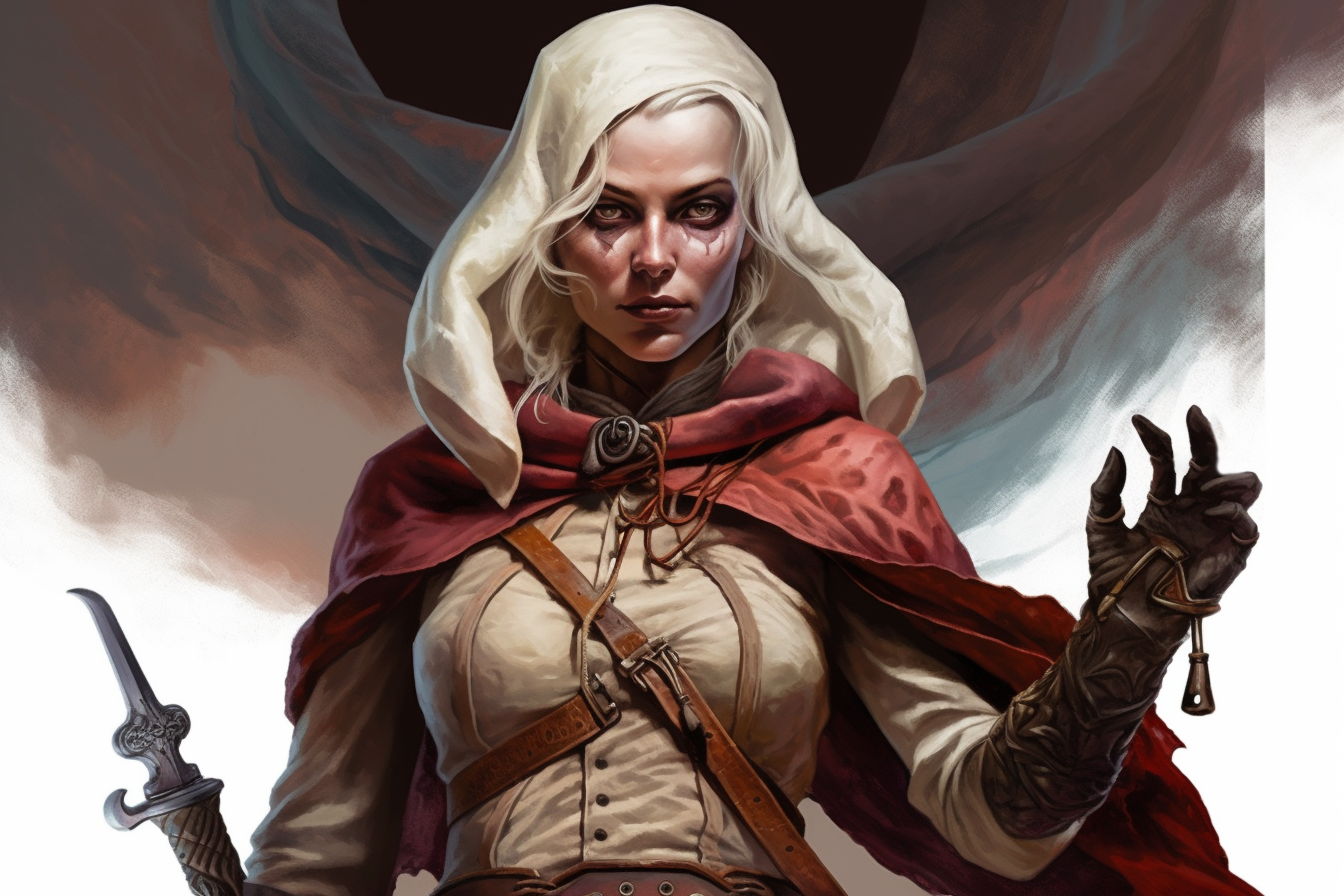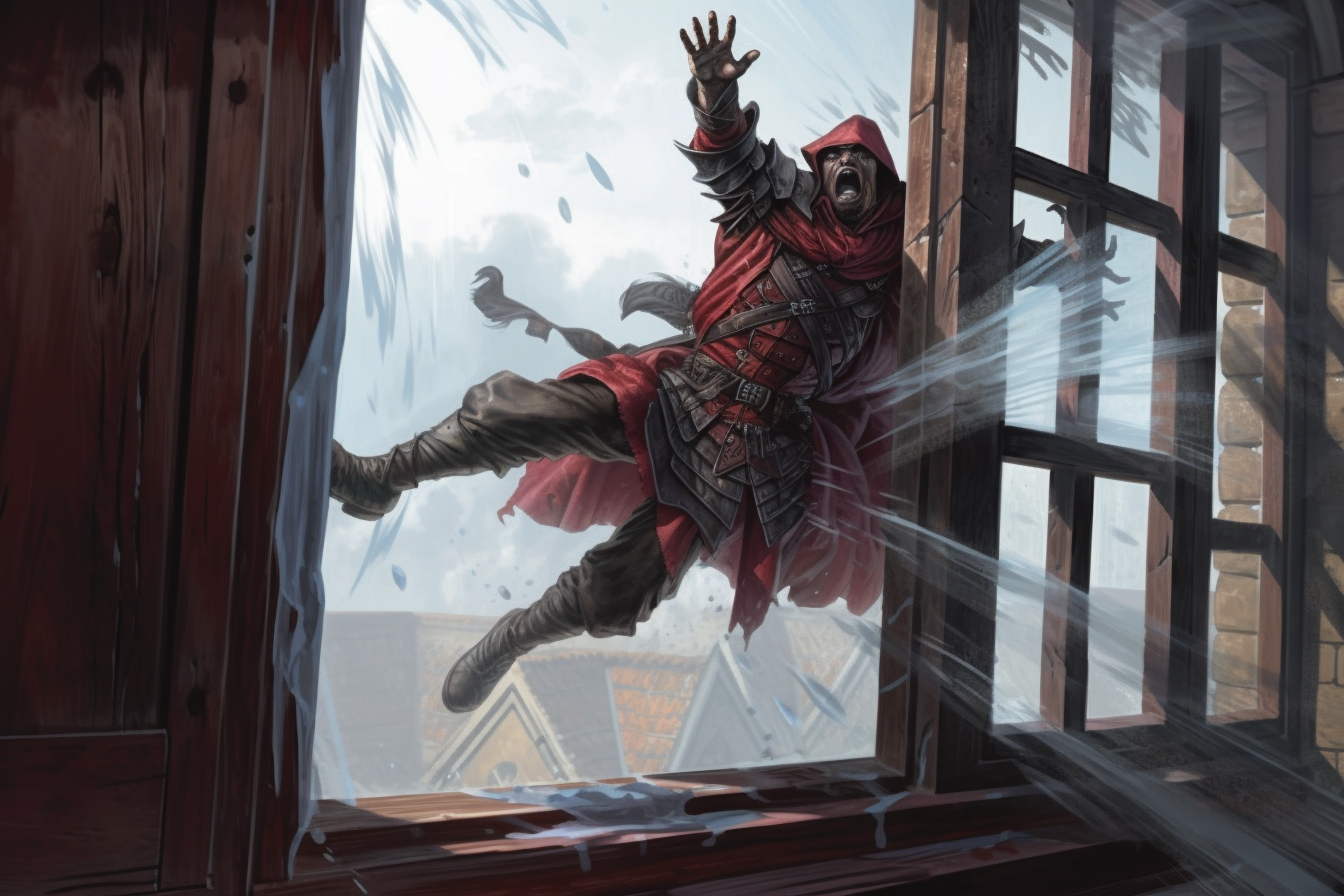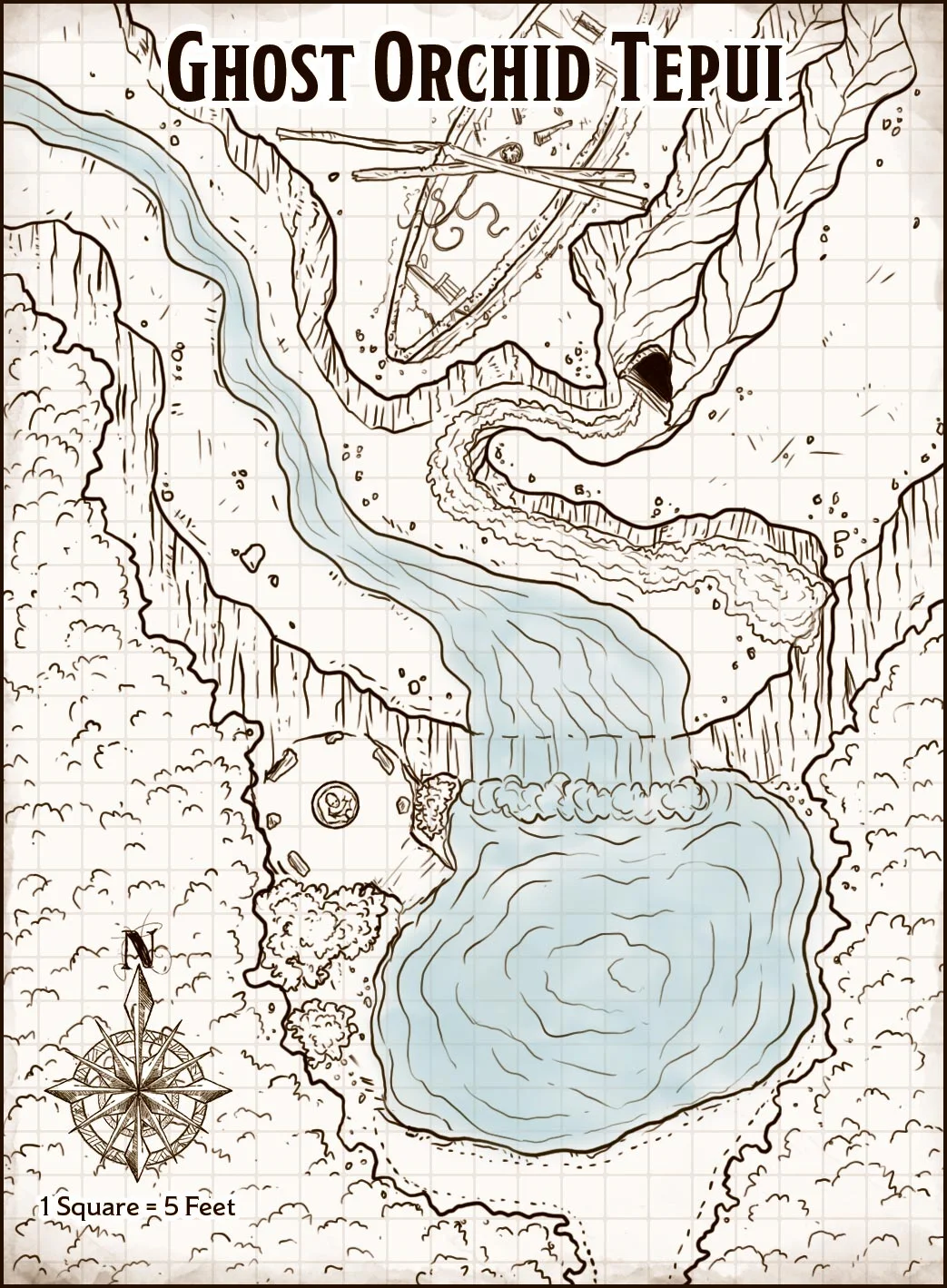
SESSION 32C: ENTER ARVETH
December 20th, 2008
The 18th Day of Kadal in the 790th Year of the Seyrunian Dynasty

Tee went over to the door that the venom-shaped thrall had been guarding and found it, predictably, locked. But it was no more difficult than the last one. Swinging it open, however, she found an even more disturbing sight: Five prisoners shackled hand-and-foot to the floor.
Tor, nursing a sick suspicion, crossed to a cocoon that was enmeshed in one corner of the hall. With a single slice of his sword, he cut it open… and a vaguely humanoid form tumbled out in a gush of acidic liquid.
“Venom-shaped… Shaped by venom.” Horror and disgust were mixed evenly in his voice.
Tee moved to free the nearest prisoner. They immediately panicked. “No! Not me! Where are you taking me?”
“It’s okay. It’s okay, I’m here to help.”
As Tee worked to undo their shackles, Agnarr headed back down the hall and grabbed the unconscious spellcaster from where they’d left him in the entryway. He wanted to keep a close eye on that one.
Questioning the prisoners they quickly determined that they had been brought here only a few days ago. There had originally been eight of them, but the cultists had been taking them away one at a time. Three of them had been kidnapped from around the city (mostly straight off the streets), but the other two reported being sold through a black market slave trade of some sort running through the Teeth of Light. And one of these reported seeing a temple with a statue of a rat-shaped man in it, leading Tor and Elestra to conclude that the followers of the Rat God must be involved, as well.
ENTER ARVETH
But what were they going to do with the prisoners? Tee definitely didn’t want to be responsible for them. And she knew that the building was being watched. They eventually decided to give each of the prisoners 10 gold pieces, told them to cover their faces, run for it, and get as far away from here as they could as quickly as possible.
But as they gathered them up to lead them out the front door, Elestra and Ranthir – who were still standing in the hall – suddenly whirled towards the front door. Two people had just come in: A blond woman and a thuggish man.
The woman hissed. “Kill them.”
Then she drank a potion and disappeared.
Tee quickly shouted at the prisoners to head upstairs – there was a window with a rope: “Get out. Get out as fast as you can. Go!”
Tor rallied the prisoners and led them upstairs. Ranthir, meanwhile, dropped a thick web into the entryway – it clearly caught the thug and he hoped it had caught the invisible woman, as well.
What they couldn’t see through the thick web, however, was that both the thug and the invisible woman had ripped their way out of the web, gone back through the front door, and were circling the building.
Tor had barely reached the rope on the second floor when an axe thrown from below thunked into the windowsill next to him. He ducked back… and the former prisoners panicked, scattering through the upper level – some cowering in corners, another getting ambushed by a patch of violent slime that fell from the ceiling, a third trying to climb out of a different window only to fall with a scream into the cobbled alley below.
Meanwhile, downstairs, Tee and Ranthir were rapidly gathering up the papers and alchemical equipment from the laboratory.
Between the axe and the panicking prisoners, Tor didn’t notice the subtle shifting of the rope as the invisible woman climbed it. She appeared suddenly before him as her knife plunged into his shoulder.
Grunting heavily, Tor dragged her through the window with her dagger still buried in him and then slammed his sword into her. She crumpled in the corner.
By the time he’d yanked the dagger out, however, the axe-throwing thug had reached the window, as well. The thug took one swing with his axe – which Tor easily ducked – and then was run through the heart with the electric-arc of Tor’s return thrust.
Tor turned to Dominic. “Heal the woman, then we’ll haul her downstairs and ask some questions.”
While Dominic did that, Tor and Tee gathered up the rest of the prisoners. One of them, unfortunately, had been killed by the violet slime. The one who had fallen out of the window had broken his leg, but Elestra was able to heal that. Then they sent them on their way. “Get as far from here as you can.”
While Agnarr and Dominic kept an eye on the prisoners – making sure that they got away safely – the others quickly mopped up the various nests and cocoons left scattered throughout the complex, making sure that the cultists’ work here was completely destroyed. They left only the barricaded room with its dangerous, gelatinous tentacles, which they resolve to deal with before going down the hole.
They reconvened on the first floor. The woman (who Tee identified as Arveth, who had recruited her into the Brotherhood) and the spellcaster were traussed up in the manacles that had formerly held the prisoners.
They were in for a rude awakening.
Running the Campaign: Non-Combat Goals – Campaign Journal: Session 33A
In the Shadow of the Spire: Index

















